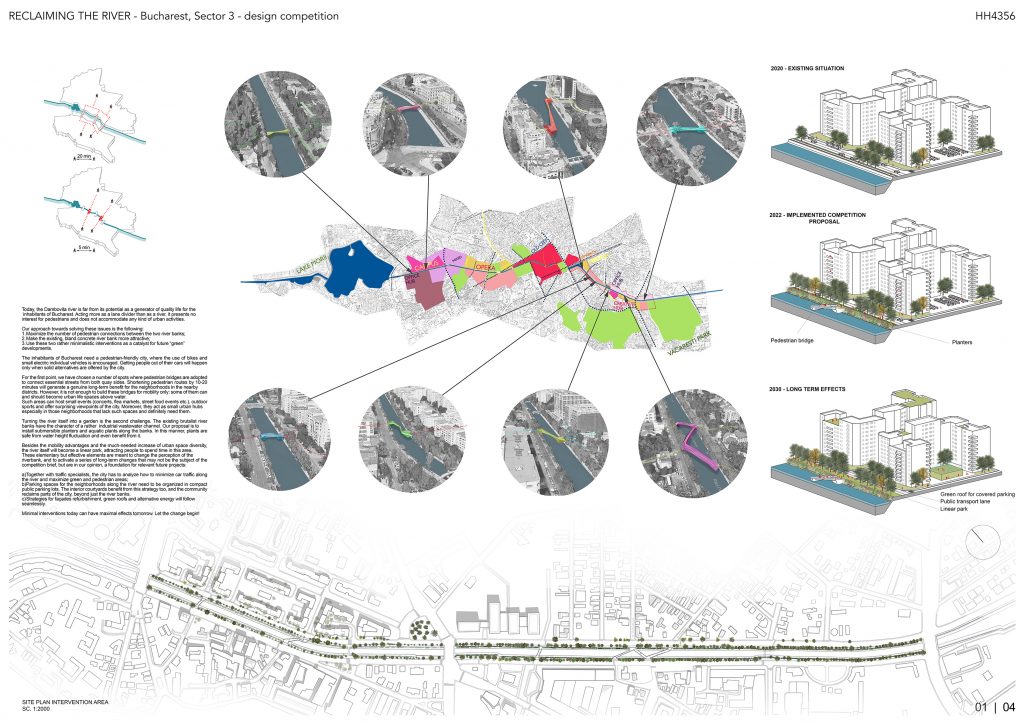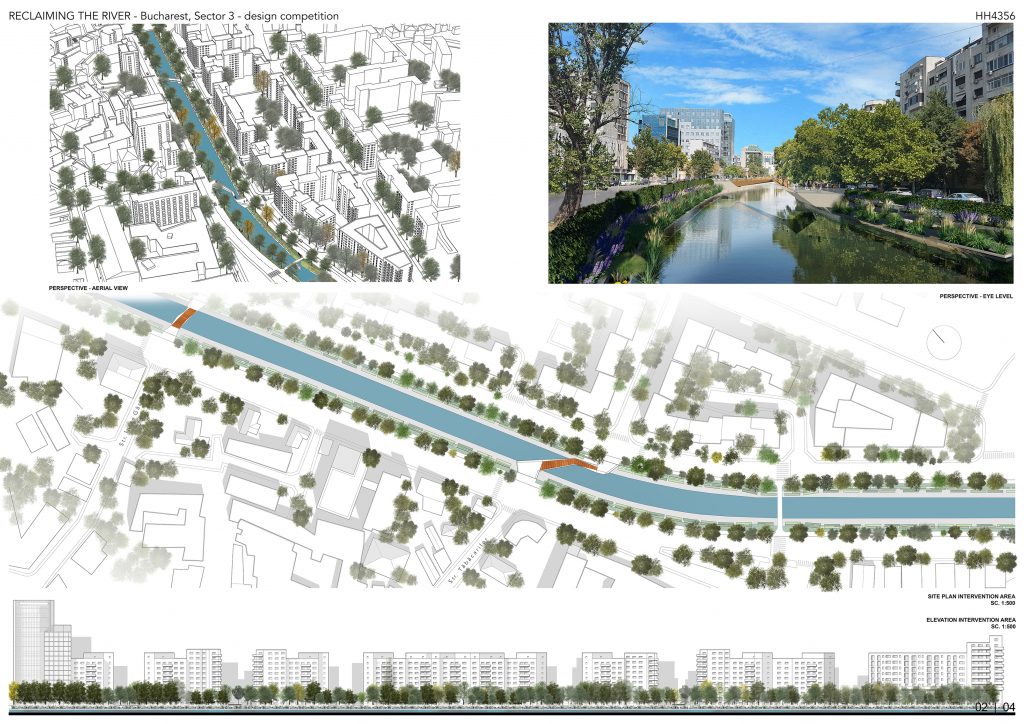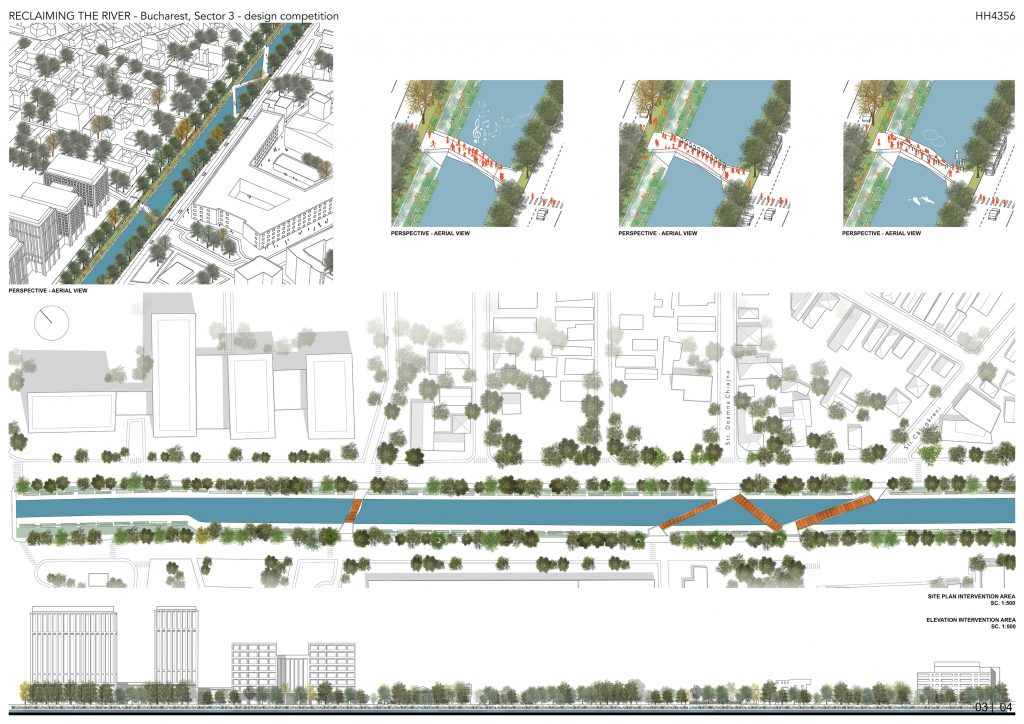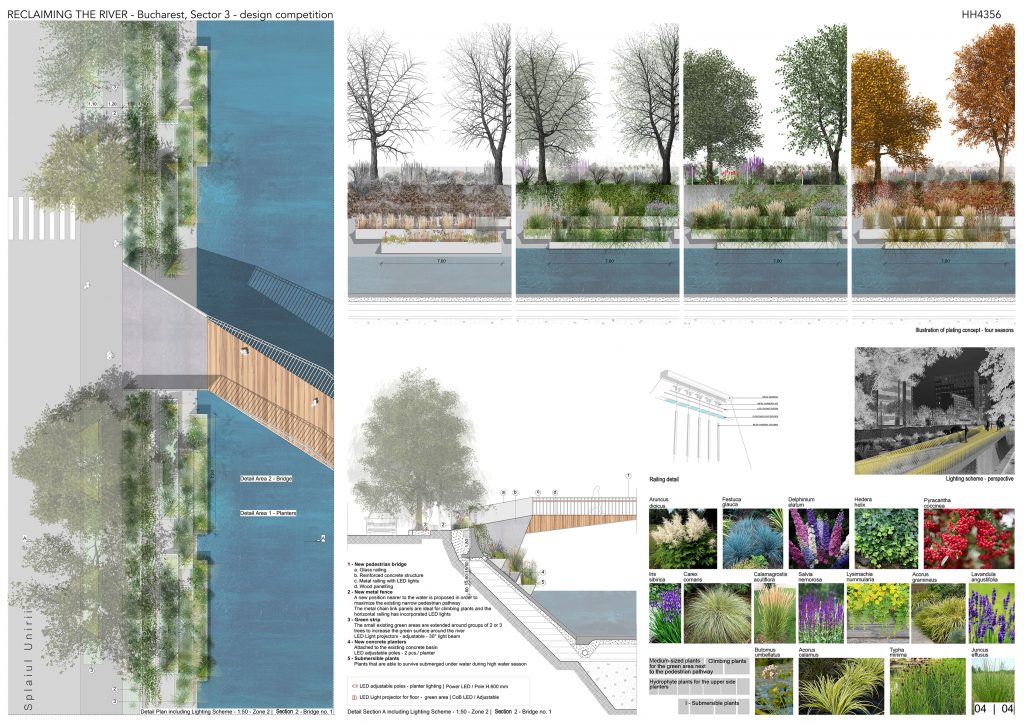58 – HH4356 – SC PATRULIUS ȘI ASOCIAȚII SRL
Main authors: Arh. Oana MOGA, Arh. Jacqueline CUZINO, Arh. Serban PATRULIUS
Co-authors: Ing. Peisagist Alexandru BALAS, Arh. Cristina MARCU
Architecture collaborators: Arh. Cristina DINU, Arh. Alexandra PISLARU, Arh. Nicoara STOENESCU, Toma ARANGHELOVICI, Andreea STANCIU, Andarda VIJAICA
Special collaborators: ing. Valentin Archip – inginer structură

Today, the Dambovita river is far from its potential as a generator of quality life for the inhabitants of Bucharest.Acting more as a lane divider than as a river, itpresents no interest for pedestrians and does not accommodate any kind of urban activities.
Our approach towards solving theseissues is the following:
- Maximize the number of pedestrian connections between the two river banks;
- Make the existing,bland concrete river bank more attractive;
- Use these two rather minimalistic interventions as a catalyst for future “green” developments.
The inhabitants of Bucharest need a pedestrian-friendly city, where the use of bikes and small electric individual vehicles is encouraged. Getting people out of their cars will happen only when solid alternatives are offered by the city.

For the first point, we have chosen a number of spots where pedestrian bridges are adoptedto connect essential streets from both quay sides. Shortening pedestrian routes by 10-20 minutes will generate a genuine long-term benefit for the neighborhoods in the nearby districts.However, it is not enough to build these bridges for mobility only: some of them can and should become urban life spaces above water.
Such areas can host small events (concerts, flea markets, street food events etc.), outdoor sports andoffer surprising viewpoints of the city. Moreover, they act as small urban hubs especially in those neighborhoods that lack such spaces and definitely need them.

Turning the river itself into a garden is the second challenge. The existing brutalist river banks have the character of a rather industrial wastewater channel. Our proposal is to install submersible planters andaquatic plants along the banks. In this manner, plants are safe from water height fluctuation and even benefit from it.
Besidesthe mobility advantages andthe much-needed increase of urban space diversity, the river itself will become a linear park, attracting people to spend time in this area.

These elementary but effective elements are meant to change the perception of the riverbank, and to activate a series of long-term changes that may not be the subject of the competition brief, but are in our opinion,a foundation forrelevant future projects:
- Together with traffic specialists, the city has to analyze how to minimize car traffic along the river and maximize green and pedestrian areas;
- Parking spaces for the neighborhoods along the river need to be organized in compact public parking lots. The interior courtyards benefit from thisstrategy too, and the community reclaims parts of the city, beyond just the river banks.
- Strategies for façades refurbishment, green roofs and alternative energy will follow seamlessly.
Minimal interventions today can have maximal effects tomorrow. Let the change begin!











